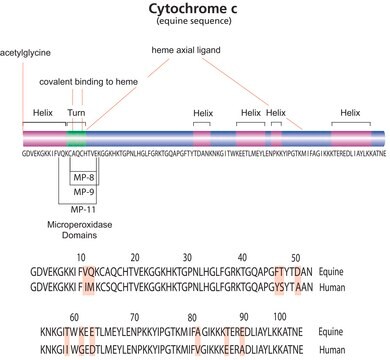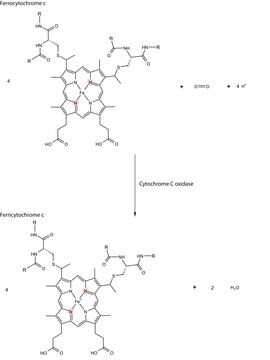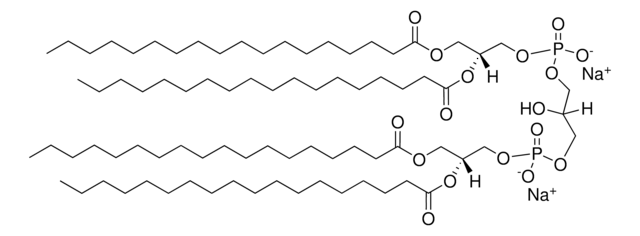C2436
Cytochrome c from Saccharomyces cerevisiae
≥85% based on Mol. Wt. 12,588 basis
About This Item
Productos recomendados
origen biológico
Saccharomyces cerevisiae
Nivel de calidad
Análisis
≥85% based on Mol. Wt. 12,588 basis
formulario
powder
mol peso
12,588 Da
técnicas
cell based assay: suitable
solubilidad
water: 10 mg/mL, clear, red to red-brown (dark red)
Nº de acceso UniProt
aplicaciones
cell analysis
temp. de almacenamiento
−20°C
Información sobre el gen
Saccharomyces cerevisiae ... CYC1(853507)
Descripción general
Aplicación
Acciones bioquímicas o fisiológicas
Calidad
Nota de preparación
Otras notas
Aplicación
Código de clase de almacenamiento
11 - Combustible Solids
Clase de riesgo para el agua (WGK)
WGK 3
Punto de inflamabilidad (°F)
Not applicable
Punto de inflamabilidad (°C)
Not applicable
Equipo de protección personal
Eyeshields, Gloves, type N95 (US)
Certificados de análisis (COA)
Busque Certificados de análisis (COA) introduciendo el número de lote del producto. Los números de lote se encuentran en la etiqueta del producto después de las palabras «Lot» o «Batch»
¿Ya tiene este producto?
Encuentre la documentación para los productos que ha comprado recientemente en la Biblioteca de documentos.
Los clientes también vieron
Artículos
Learn about the four membrane-bound protein complexes that make up the electron transport chain metabolic pathway supplying energy as ATP for cellular respiration.
Chromatograms
application for HPLCapplication for HPLCapplication for HPLCNuestro equipo de científicos tiene experiencia en todas las áreas de investigación: Ciencias de la vida, Ciencia de los materiales, Síntesis química, Cromatografía, Analítica y muchas otras.
Póngase en contacto con el Servicio técnico






